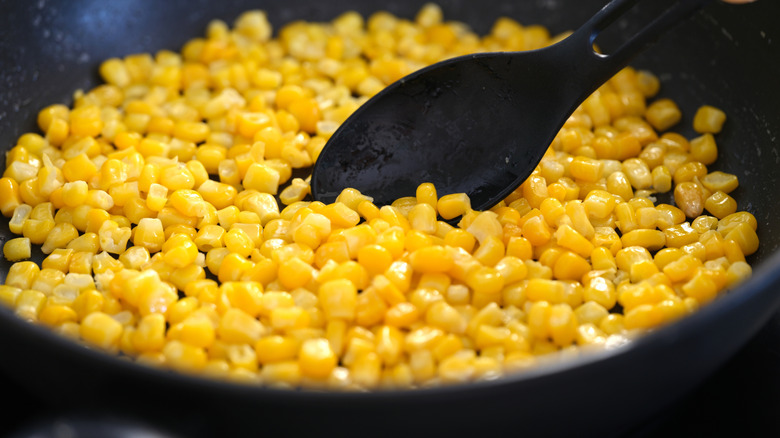The Major Mistake You've Got To Stop Making With Frozen Corn
We may receive a commission on purchases made from links.
Frozen vegetables are one of the cheapest and easiest ways to fulfill your daily vegetable intake. They're frozen while fresh, meaning that many of the nutrients remain, even if in your freezer for a few months, and are a great way to reduce food waste, too. If you're prone to throwing away fresh veggies that have gone bad, frozen ones are a convenient ingredient to have on hand, since they're safe to eat for up to one year. And, of course, it doesn't take much effort to cook them. You can just microwave a serving of frozen corn or throw it into a pot of boiling water, right? Well, we're here to tell you that boiling frozen corn is actually a pretty bad mistake, since it negatively impacts your corn's flavor and texture.
The benefits of buying frozen veggies are plenty, but you should know how to prepare them properly. If you boil corn, you might notice that it goes a bit soggy once you remove it from the boiling water. Frozen corn has a high water content to begin with, and when it's placed into a vat of boiling water, it retains even more water and loses its characteristic crispness. This textural change leads to an inevitable loss of flavor, too: Corn should be sweet and juicy, not soggy and wet, so to cook a serving of corn you won't be able to stop thinking about, consider a different method.
Keep your frozen corn crisp by sauteing it
To keep corn at a prime texture and taste, try cooking it in a skillet over the stove. Before doing so, rinse it off with cold water over a colander to remove all of the ice from the freezer, being sure to shake off any leftover water. Once it's ready to go, turn the stove up to medium heat and add a bit of butter to the pan. Place the corn on the skillet for about five to six minutes, stirring from time to time. If you want to further bring out some of the sweetness of the corn, sprinkle some sugar over it while it's heating in the skillet. Lemon juice is another option: Squeezing a little over the corn will enhance its flavor.
Before removing your sauteed corn from the stove, taste test it to ensure it's reached your desired texture. The corn kernels should be tender and plump, but not overly crunchy or tough. Add salt and pepper to taste, along with any additional seasoning you like, such as Old Bay seasoning, which is made up of paprika, pepper, and celery salt.

